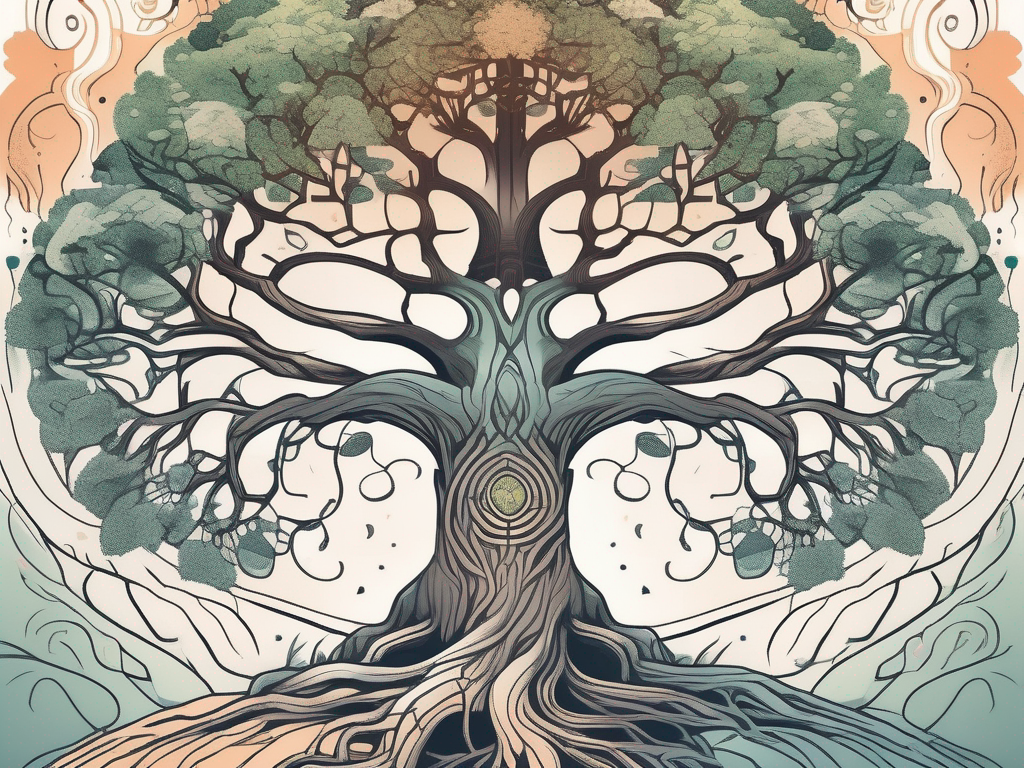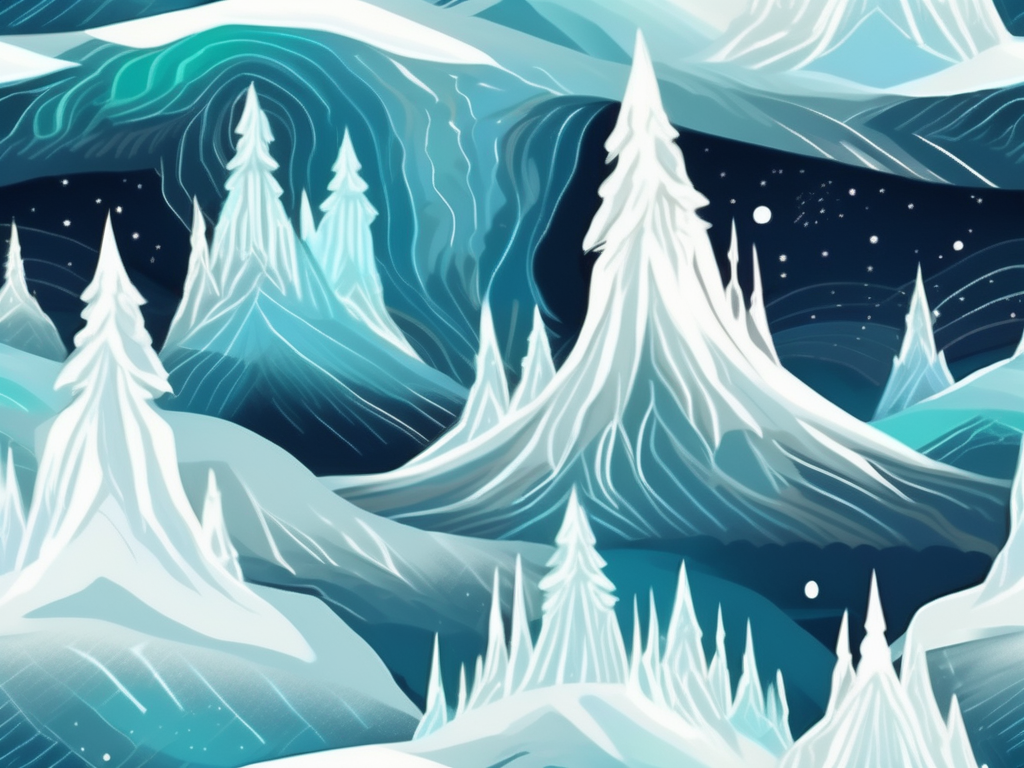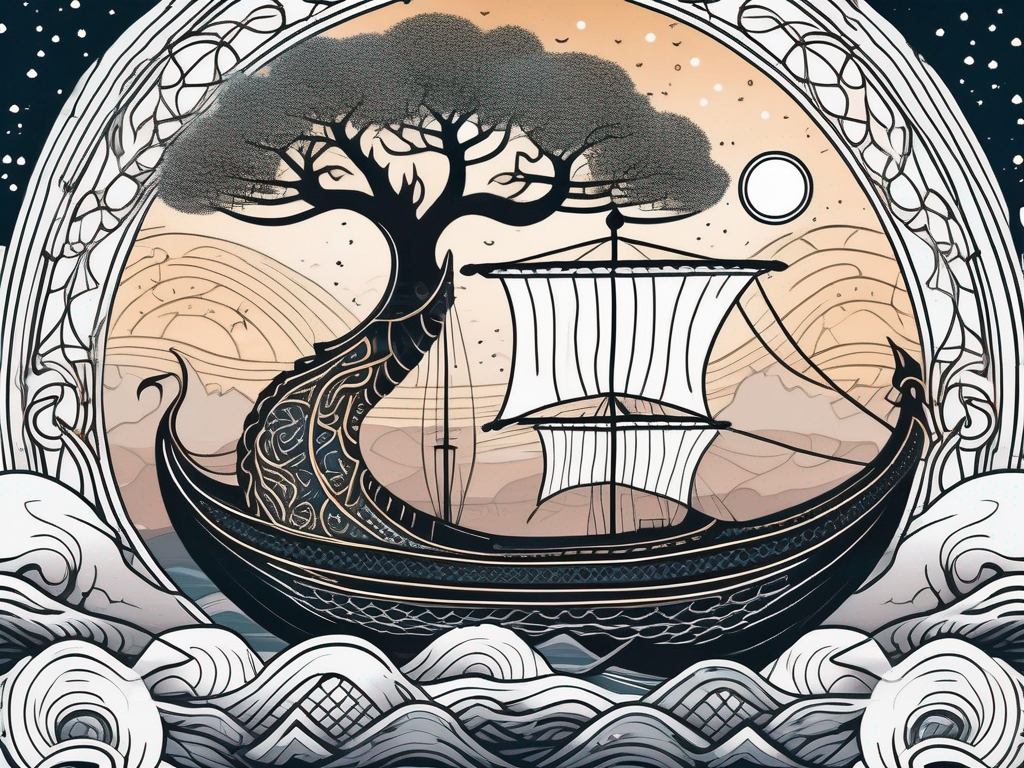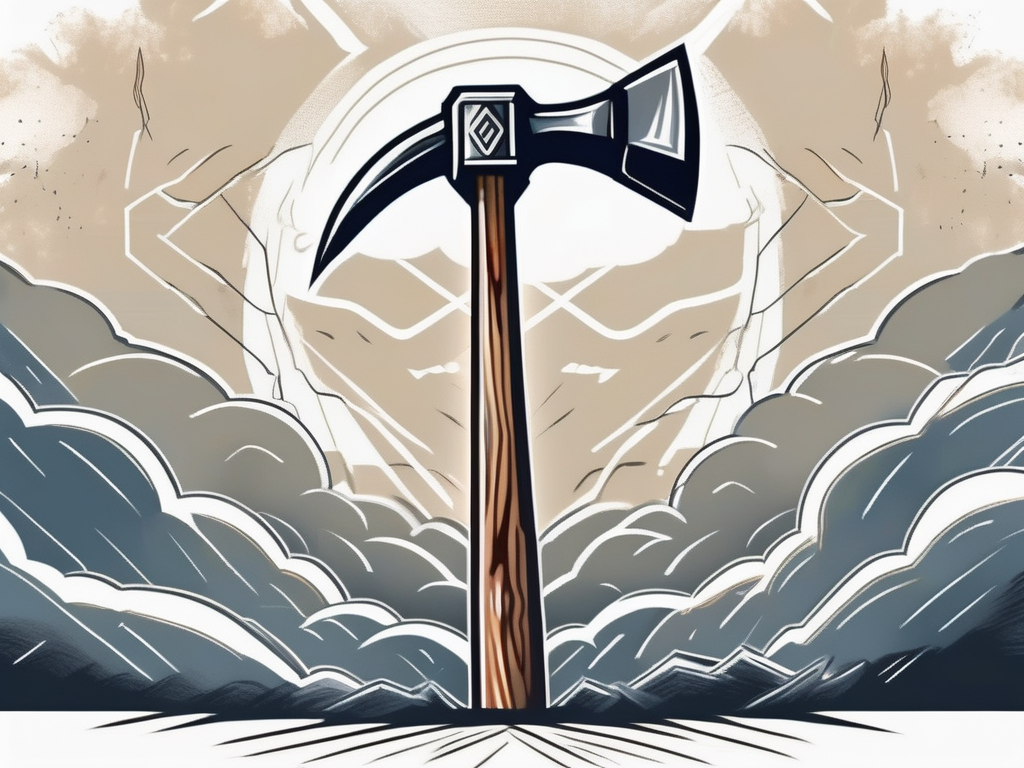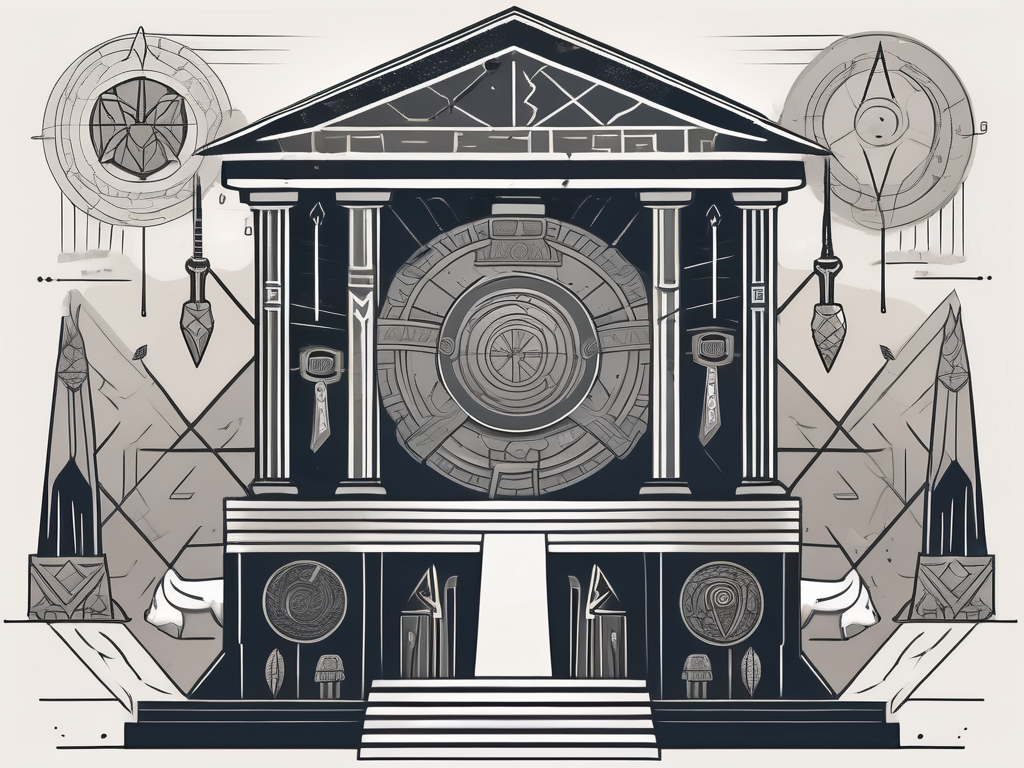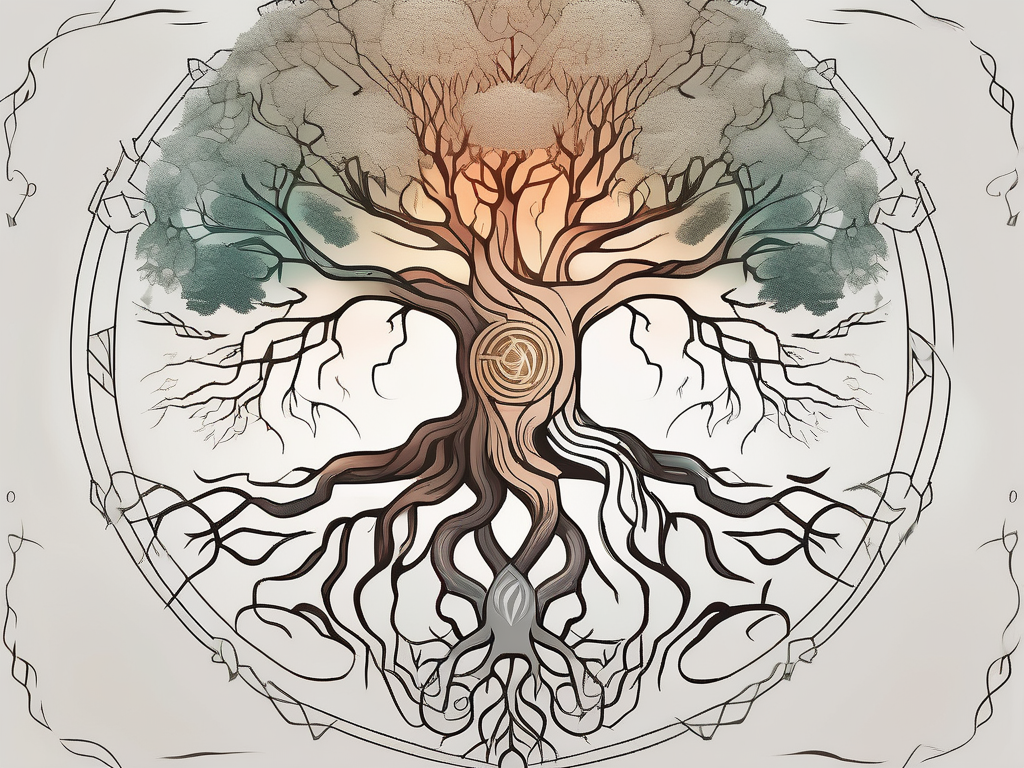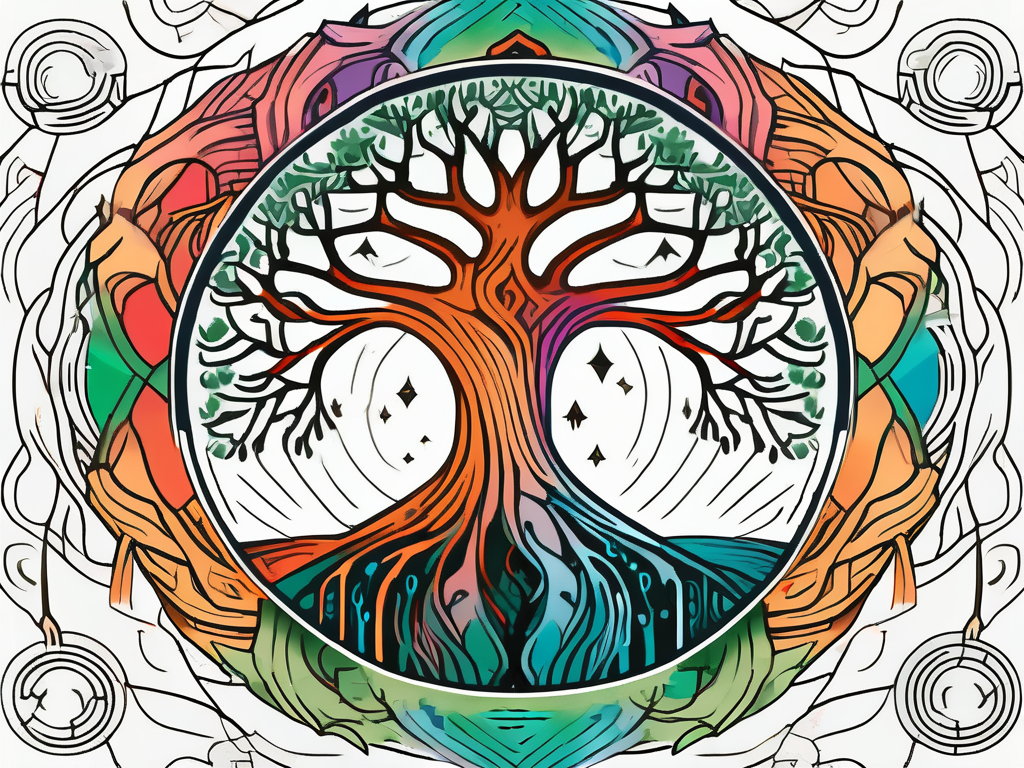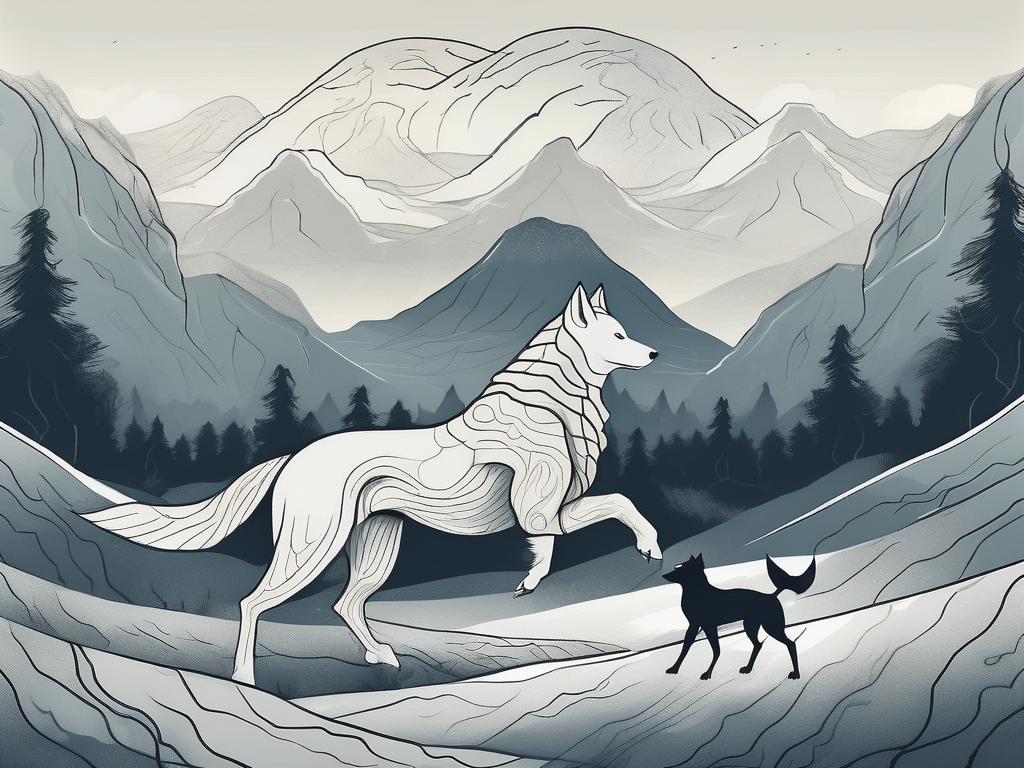Norse mythology is a treasure trove of stories and legends, filled with fascinating characters and mythical creatures. Among these, the giants hold a special place. In this article, we will dive deeper into the realm of Norse mythology and explore the might and mysteries of the giants.
Understanding Norse Mythology
Before we delve into the world of giants, it’s important to have a basic understanding of Norse mythology. This ancient belief system originated among the Norse people, who inhabited the regions of Scandinavia during the Viking Age. Norse mythology is a complex tapestry of tales, gods, and supernatural creatures that shaped the beliefs and culture of the ancient Norse society.
The Norse pantheon is populated by a diverse range of deities, creatures, and celestial beings, all of whom play a crucial role in the grand tapestry of Norse mythology.
The Origins of Norse Mythology
The roots of Norse mythology can be traced back to the pre-Christian era when the Norse people worshiped a pantheon of gods and goddesses. These deities represented various aspects of life, nature, and the human condition. The mythology itself was passed down through oral tradition and later recorded in written form in the Eddas and sagas.
These ancient texts provide us with valuable insights into the belief systems, traditions, and cosmology of the Norse people.
One of the most fascinating aspects of Norse mythology is its connection to the natural world. The Norse people believed that the gods and goddesses were not distant entities, but rather intimately connected to the earth, the sky, and the sea. For example, Thor, the god of thunder, was seen as the personification of lightning and storms. Freyja, the goddess of love and fertility, was associated with the beauty and abundance of nature.
The Importance of Giants in Norse Beliefs
Giants hold a significant place in Norse mythology, often depicted as powerful, enigmatic, and sometimes even menacing figures. These mythological beings were not simply brutish creatures; they played key roles in shaping the world and its future.
The giants were believed to be the ancient adversaries of the gods. Their conflicts and interactions with the divine beings often led to great consequences, both for the inhabitants of the mythological realm and for the mortal world.
One famous giant in Norse mythology is Ymir, the primordial being from whose body the world was created. According to the myth, Ymir’s flesh became the earth, his blood turned into the sea, and his bones formed the mountains. This story highlights the intertwined nature of giants and the natural world in Norse mythology.
Another notable giant is Jotunheimr, the land of the giants. This realm, located in the east, was a place of mystery and danger. It was said to be a land of towering mountains, deep valleys, and treacherous landscapes. The giants who dwelled in Jotunheimr were known for their immense strength and magical abilities.
Despite their often antagonistic relationship with the gods, giants were not universally evil in Norse mythology. Some giants, such as Skadi, were portrayed as complex characters with their own motivations and desires. Skadi, for example, sought revenge for the death of her father and eventually became a respected member of the Norse pantheon.
Overall, giants played a crucial role in Norse mythology, representing the forces of chaos, nature, and the unknown. Their interactions with the gods and their influence on the world added depth and complexity to the Norse belief system.
The Mighty Giants of Norse Mythology
Now that we have a broader understanding of Norse mythology, let us turn our attention to the mighty giants themselves.
Giants have always held a significant place in Norse mythology, playing a crucial role in the creation and development of the world. These colossal beings, known for their immense strength and larger-than-life presence, have captivated the imaginations of storytellers and scholars alike.
Ymir: The First of the Norse Giants
According to Norse creation mythology, the world began with a primordial giant named Ymir. Ymir was said to have emerged from the vast void Ginnungagap, nourished by the primeval waters of the world. From his body, the world sprang forth, and the race of giants came into existence.
Ymir, with his massive form, represented the chaotic and untamed forces of nature. His existence was a testament to the raw power that resided within the giants, making them a force to be reckoned with.
This cosmic giant served as the progenitor of the giant kind, and his presence is deeply woven into the fabric of Norse mythology. The giants, descendants of Ymir, inherited his immense strength and formidable characteristics, making them formidable opponents for both gods and mortals.
Jotunheim: The Land of the Giants
Jotunheim, also known as Utgard, was the realm where the giants resided. It was a land of vast landscapes, towering mountains, and frosty landscapes. Jotunheim was regarded as a world separate from the realm of the gods, though it often played a central role in both conflicts and alliances between the two.
Within Jotunheim, giants were thought to possess incredible powers and abilities. They were renowned for their strength, resilience, and cunning. Each giant possessed unique traits and characteristics that made them formidable opponents.
From the frost giants who could freeze entire landscapes with a single breath to the fire giants who wielded flames with devastating precision, the giants of Jotunheim were a diverse and powerful group. They were not only physically imposing but also possessed a deep understanding of magic and the arcane arts.
The Role and Characteristics of Giants
Giants in Norse mythology were not limited to mere physical prowess; they were often depicted as wise, magical, and possessors of arcane knowledge. Some giants were skilled in the arts of sorcery, while others were masters of ancient crafts and craftsmanship.
However, like any mythological beings, giants were not without flaws. They could be greedy, vengeful, and prone to causing chaos in the worlds of gods and men. Their immense power often led them to clash with the gods, resulting in epic battles that shaped the course of Norse mythology.
Despite their formidable nature, giants were not always portrayed as villains. In some tales, they formed alliances with gods or even fell in love with mortals, blurring the lines between the realms of giants, gods, and men.
The giants of Norse mythology continue to fascinate and inspire, representing the untamed forces of nature and the complexities of the human condition. Their presence in the mythological landscape serves as a reminder of the eternal struggle between order and chaos, power and vulnerability.
Notable Giants in Norse Mythology
Now that we have explored the world of giants, let’s take a closer look at some notable figures from Norse mythology.
Loki: The Trickster Giant
Perhaps one of the most famous giants in Norse mythology is Loki. Often portrayed as a cunning trickster, Loki was both a god and a giant. His dual nature allowed him to blur the boundaries between the realms of gods and giants.
Loki played a pivotal role in many of the myths and stories of Norse mythology. His mischievous deeds often created discord among the gods and led to catastrophic events.
Hel: The Giantess of the Underworld
Hel, the daughter of Loki, was another prominent giant in Norse mythology. She ruled over Helheim, the realm of the dead. Half of her body was described as beautiful, while the other half was that of a decaying corpse.
Hel was a complex figure, associated with both life and death. Her role as the ruler of Helheim demonstrated the giants’ connection to the cycles of life and their understanding of the mysteries beyond mortality.
Fenrir: The Monstrous Wolf
Fenrir, an immense and fearsome wolf, is another noteworthy giant in Norse mythology. Born from the union of Loki and the giantess Angrboda, Fenrir was prophesied to be a great threat to the gods.
As the gods attempted to contain Fenrir’s power and inevitable destruction, the chain Gleipnir was forged to bind him. However, Fenrir’s power grew to such heights that he ultimately played a pivotal role in the cataclysmic event known as Ragnarok.
The Giants’ Influence on Norse Culture and Literature
The tales of giants in Norse mythology had a profound impact on the culture and literature of the Norse people.
Giants in Norse Poetry and Sagas
Throughout the Eddas and sagas, giants are depicted as powerful figures who often challenged the gods and shaped the course of events. Their inclusion in these ancient literary works provided the Norse people with a deeper understanding of their place in the world and the forces at play.
The giants’ stories were recited in poetry, sung in sagas, and passed down through generations, ensuring their lasting impact on Norse culture.
The Giants’ Impact on Norse Art and Symbolism
Not only did the giants leave their mark on written literature, but they also influenced Norse art and symbolism. Giant-inspired motifs can be found in ancient Norse carvings, depictions, and even runestones.
These artistic representations served to immortalize the giants’ presence in the collective consciousness of the Norse people and emphasized their significant role in shaping their mythology and worldview.
The End of the Giants: Ragnarok
Every story must come to an end, and the tales of the giants are no exception.
The Prophecy of Ragnarok
Ragnarok, the apocalyptic event of Norse mythology, played a central role in the giants’ ultimate fate. According to prophecy, during Ragnarok, giants would clash with the gods in a final battle that would bring about the end of the world.
This climactic confrontation symbolized the cyclical nature of the universe and the eternal struggle between order and chaos.
The Giants’ Role in the Apocalypse
The giants, led by their mighty leader Surtr, would march against the gods, challenging the established order and heralding a period of destruction and renewal. This cataclysmic event would mark the end of the giants’ reign and the beginning of a new era for the surviving gods and the world itself.
Thus, the giants fulfilled their role as agents of change and catalysts for the transformation of the Norse cosmos.
In Conclusion
Unveiling the mighty giants of Norse mythology has allowed us to glimpse into a fascinating world of legends and ancient beliefs. These colossal beings shaped the realms of gods and men, leaving an indelible mark on Norse culture, literature, and art.
Their stories, both fearsome and awe-inspiring, remind us of the eternal struggle between order and chaos and the ever-changing nature of the universe. So, let us honor the giants of Norse mythology and keep their tales alive, allowing them to continue captivating our imagination for generations to come.
